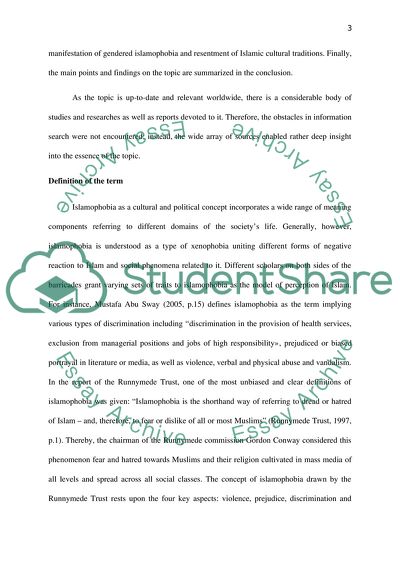Cite this document
(Islamic Culture - Islamophobia Research Paper Example | Topics and Well Written Essays - 3750 words, n.d.)
Islamic Culture - Islamophobia Research Paper Example | Topics and Well Written Essays - 3750 words. Retrieved from https://studentshare.org/religion-and-theology/1880948-islamic-culture-islamophobia
Islamic Culture - Islamophobia Research Paper Example | Topics and Well Written Essays - 3750 words. Retrieved from https://studentshare.org/religion-and-theology/1880948-islamic-culture-islamophobia
(Islamic Culture - Islamophobia Research Paper Example | Topics and Well Written Essays - 3750 Words)
Islamic Culture - Islamophobia Research Paper Example | Topics and Well Written Essays - 3750 Words. https://studentshare.org/religion-and-theology/1880948-islamic-culture-islamophobia.
Islamic Culture - Islamophobia Research Paper Example | Topics and Well Written Essays - 3750 Words. https://studentshare.org/religion-and-theology/1880948-islamic-culture-islamophobia.
“Islamic Culture - Islamophobia Research Paper Example | Topics and Well Written Essays - 3750 Words”, n.d. https://studentshare.org/religion-and-theology/1880948-islamic-culture-islamophobia.


